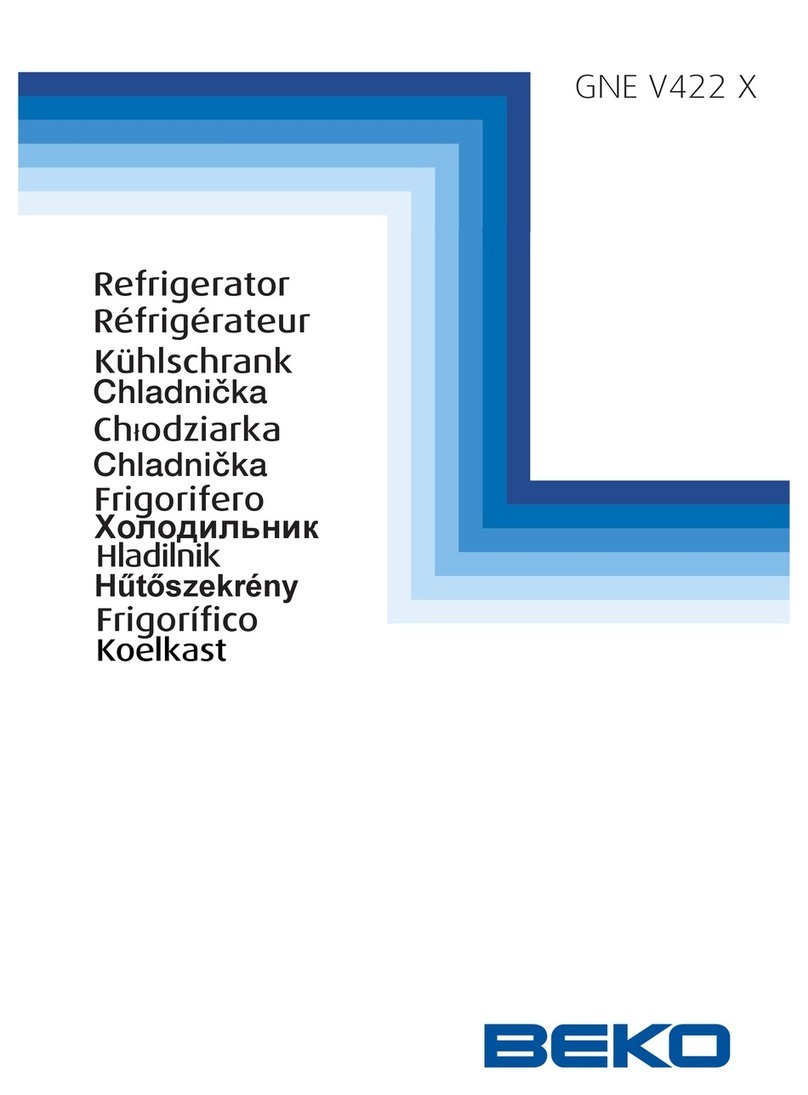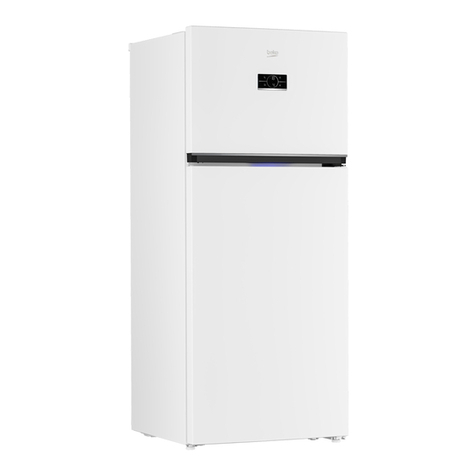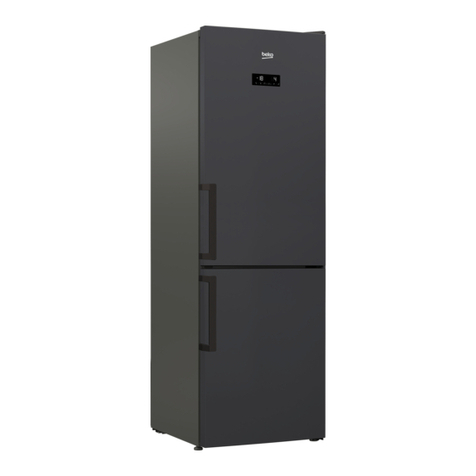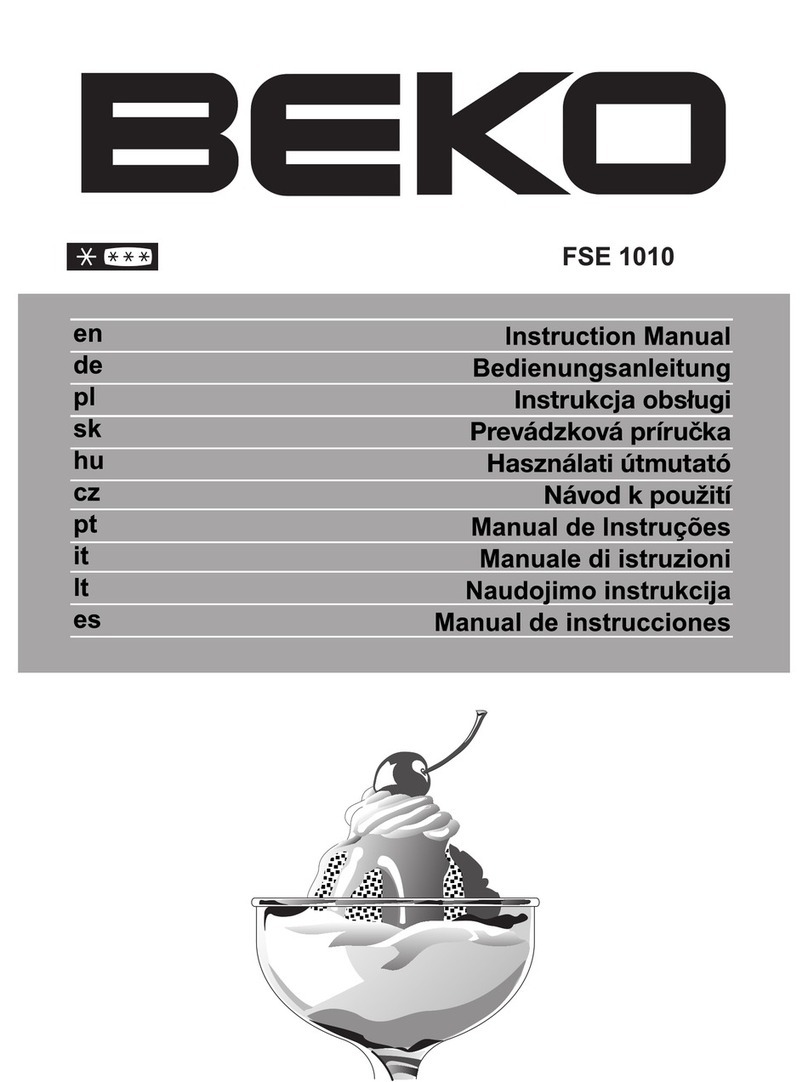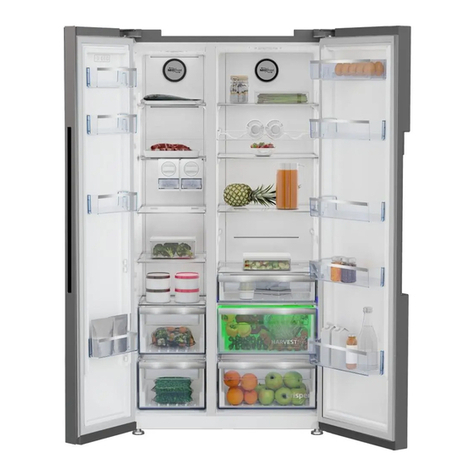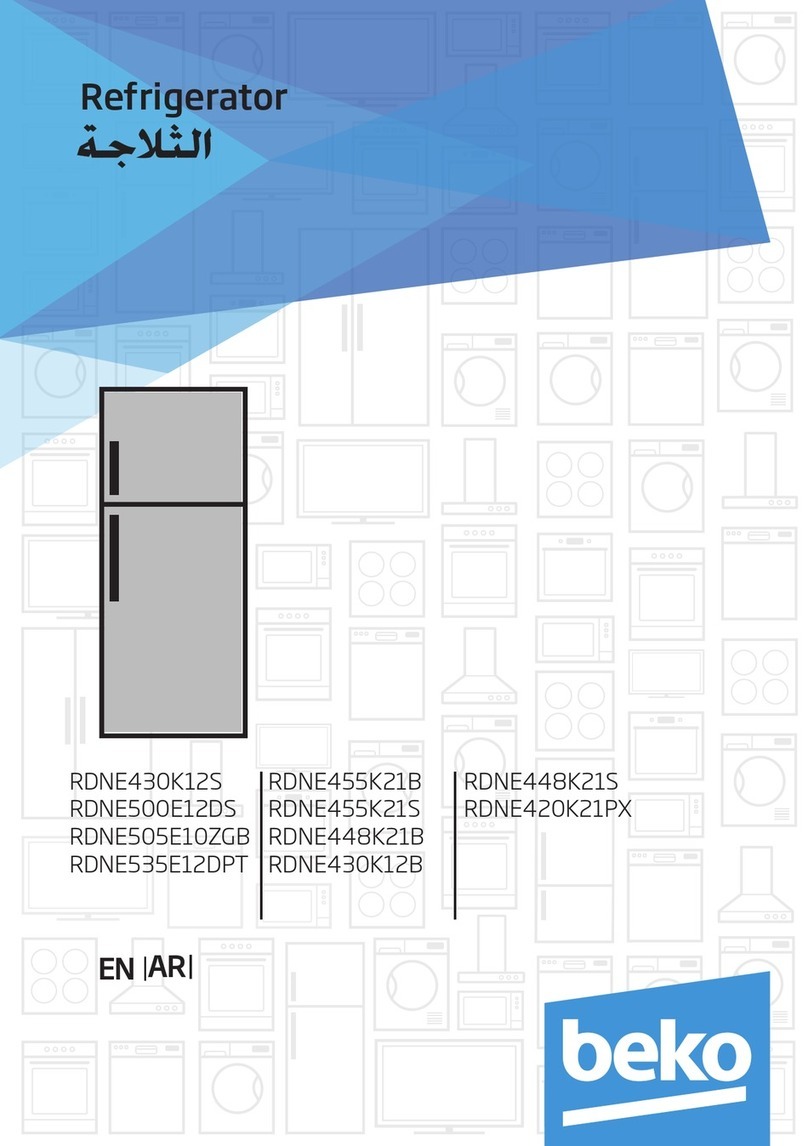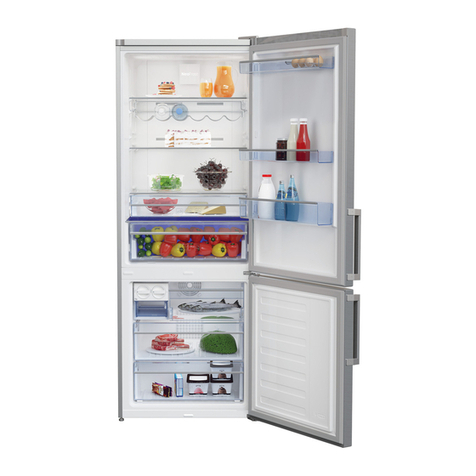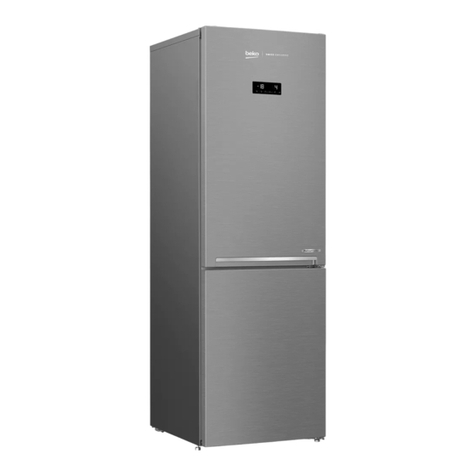WARNING!
In order to ensure a normal operation of your refrigerating appliance, which uses a completely environmentally
friendly refrigerant the R600a (flammable only under certain conditions) you must observe the following rules:
Do not hinder the free circulation of the air around the appliance.
Do not use mechanical devices in order to accelerate the defrosting, others than the ones recommended by
the manufacturer.
Do not destroy the refrigerating circuit.
Do not use electric appliances inside the food keeping compartment, other than those that might have been
recommended by the manufacturer.
OPOZORILO!
Za normalno delovanje vaše zamrzovalne naprave, ki uporablja naravi prijazno hladilno sredstvo R600a
(vnetljivo samo pod določenimi pogoji), je treba upoštevati naslednja pravila:
Ne zadržujte prostega pretoka zraka okoli naprave.
Za hitrejše odtajanje, ne uporabljajte mehanskih naprav, ki jih ni priporočil proizvajalec.
Ne uničujte hladilnega krogotoka.
V prostoru za hrano ne uporabljajte električnih naprav, ki jih ni priporočil proizvajalec.
UPOZORENJE!
Da biste obezbedili normalan rad Va.eg fri.idera, koji koristi ekolo.ki rashlađivač R600a (a koji je zapaljiv samo
pod određenim okolnostima) morate po.tovati sledeća pravila:
Nemojte ometati slobodan protok vazduha oko uređaja.
Nemojte koristiti druga mehanička sredstva osim onih koje predviđa proizvođač, da biste ubrzali
odmrzavanje.
Nemojte uni.titi jedinicu za hlađenje.
Nemojte koristiti električne uređaje u odeljku za čuvanje hrane, osim onih koje preporučuje proizvođač.
УВАГА!
Для того, щоб забезпечити нормальну роботу Вашого холодильника, в якому використовується
охолоджуючий реагент R600a, абсолютно нешкідливий для навколишнього середовища (займається
лише за певних умов), Вам
Необхідно дотримуватися наступних правил..
Не створюйте перепон для вільної циркуляції повітря навколо холодильника.
Не користуйтесь жодними механічними пристроями та інструментами для видалення льоду під час
розморожування холодильника, окрім тих, що рекомендовані виробником.
Не допускайте пошкодження охолоджуючого контура.
Не встановлюйте всередину холодильного відділення, де зберігаються продукти, жодних електричних
пристроїв, окрім тих, що рекомендовані виробником.
ВНИМАНИЕ!
Вашия апарат съдържа хладилна течност R600a (запалим само при определени условия) газ от
естествен произход който е силно съвместим със изискванията за опазване на околната среда. За да
осигурите нормална работа на Вашият уред моля спазвайте следните правила:
Осигурете нормална вентилация на уреда.
Не използвайте механични устройства за размразяване на уреда, освен тези препоръчни от
производителя.
Не наранявайте хладилната верига.
Не използвайте електрически уреди вътре в апарата.
ВНИМАНИЕ
Для того, чтобы обеспечить нормальную работу Вашего холодильника в котором используется
охлаждающий реагент R600a, совершенно безвредный для окружающей среды (воспламеняющийся
только в определенных условиях), Вам следует соблюдать следующие правила.
Не создавайте препятствий для свободной циркуляции воздуха вокруг холодильника.
Не пользуйтесь никакими механическими приспособлениями и инструментами для удаления льда при
размораживании холодильника, коме тех, которые рекомендованы изготовителем.
Не допускайте повреждения охлаждающего контура.
Не устанавливайте внутрь холодильного отделения, где хранятся продукты, никакие электрические
устройства, кроме тех, которые рекомендованы изготовителем.




